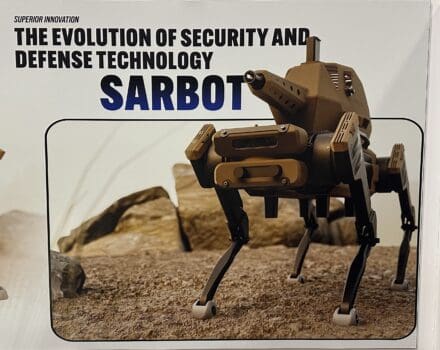
From 18 to 20 February 2025, the Xponential Europe trade fair, which focuses on robotics and unmanned systems, will take place for the first time in Düsseldorf. Rheinmetall is the largest exhibitor, underlining its claim to leadership in this field. Under the motto ‘Leadership in unmanned digital ecosystem and robotics’, the Dax-listed technology company and its subsidiaries MIRA GmbH and Yardstick Robotics are presenting their latest developments in the fields of robotics, drones, unmanned systems and teleoperated driving.
Rheinmetall is showing a wide range of its unmanned systems for military and law enforcement applications, including:
– the LUNA NG VTOL (Vertical Take-off and Landing), a tactical fixed-wing Unmanned Aerial System with vertical take-off and landing capability, reconnaissance equipment (ISR, Intelligence, Surveillance, Reconnaissance) and optional effectors
– the Fixed Wing Vehicle FV-002, a fixed-wing drone primarily for close-range reconnaissance
– the Rotary Wing Vehicle RV-002, a rotary wing drone for close-range reconnaissance with a payload capacity of 750 grams
– the target drone Fixed Wing Vehicle FV-015
– the walking robot Robotics L.
MIRA GmbH, a wholly-owned subsidiary of Rheinmetall AG, is paving the way for automated mobility with teleoperation. MIRA uses teleoperation to decouple the driver from the vehicle. This makes it possible to control the vehicle remotely from a control panel located anywhere.
Teleoperation of vehicles on public roads requires powerful IT systems. In the ‘POQUASIA – Post-quantum secure generic IoT application’ project, the Rheinmetall Technology Center, with the support of MIRA GmbH, is developing a scalable, real-time-capable and generic Internet of Things (IoT) platform within a cloud environment.
The aim of the project is to demonstrate the potential of cloud-based applications using the example of teleoperation and to test the use of post-quantum cryptography to protect against future cyber threats. This will provide digital innovations that meet the highest security, latency and availability requirements. The project is funded by the German Federal Ministry for Economic Affairs and Climate Protection and supports the European IPCEI-CIS initiative to realise a unique multi-provider cloud-edge continuum.
During the trade fair, MIRA GmbH and the POQUASIA project are offering visitors to Xponential Europe the opportunity to take a ride in one of their teleoperated shuttle vehicles on public roads. In addition, MIRA GmbH will be providing first-hand information about its innovative technology and its diverse applications in logistics and passenger transport.
Rheinmetall subsidiary YardStick Robotics is a manufacturer of AI-enabled robotic solutions for extreme, unstructured and unpredictable environments. The specialised collaborative cobot ‘YARO Cobot’ is developed for the toughest of missions – in other words, robots for ‘dull, dirty & dangerous’ activities. YardStick Robotics is currently working on solutions for a range of applications from the deep sea to extraterrestrial missions in the future. In keeping with the motto ‘Robots for the World’s Toughest Jobs’, the focus is also on the safe automation of industries that have not previously had access to such robotic solutions.
At Xponential Europe, Yardstick Robotics will be showcasing
· the outdoor cobot: ‘YARO Cobot’ – a specially developed collaborative robot for reliable use in rough, unstructured outdoor environments
· an Autonomous Underwater Vehicle (AUV) study – an autonomous underwater platform for precise inspection and monitoring tasks in marine and inland waters
· MagnetCrawler – an intelligent system for inspecting and monitoring metallic surfaces, e.g. for industrial applications
Xponential Europe is open daily from 9:00 a.m. to 6:00 p.m.from 18 to 20 February 2025. We look forward to welcoming you to our booth 1C25.
For more information about Xponential Europe, visit: www.xponential-europe.de





























































































































